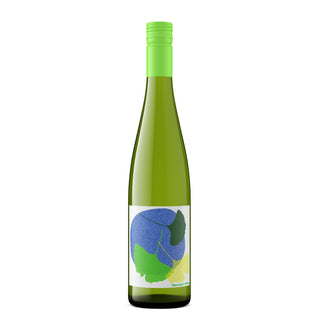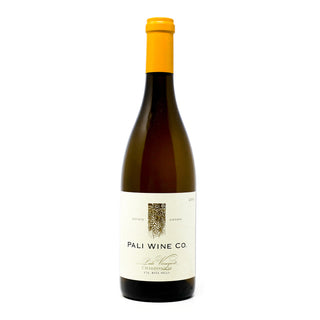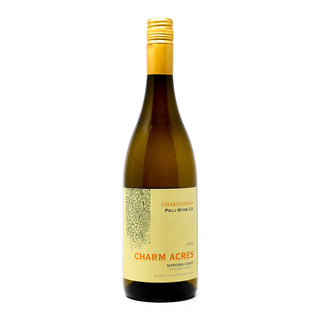Nestled within Santa Barbara County lies the Sta. Rita Hills – a wonder of viticultural geography and our winery’s cherished home.

Thriving amidst the expanse of the Sta. Rita Hills is a grape as enigmatic as the land itself: Pinot Noir. This grape is a living testament to the tightrope walk between nature and nurture. Pinot Noir, in its essence, is demanding. Its delicate, thin-skinned berries require not just any climate but a harmony of conditions like precise soil, temperature, and sunlight. The early budding of Pinot Noir sets the stage for a dramatic growing season. It emerges at the beginning of spring, vulnerable to the whims of frosts, yet yearning for the gentle warmth of the sun. As the season progresses, the grape's thin skin–both its shield against the elements and the source of its flavor–walks a tightrope between survival and ruin. Excessive cold leads to succumbing to the icy grip of frost, while too much heat results in withering under the sun's relentless gaze. The drama intensifies with the looming threat of rain and hail. Each drop and ice pellet pose a potential disaster for the tightly clustered berries. Yet, in the face of these adversities, Pinot Noir reveals its true character. When nurtured under the ideal conditions that the Sta. Rita Hills so perfectly provides, this grape transforms into a wine of incomparable beauty. It becomes a liquid tapestry, weaving together delicate aromatics, a spectrum of flavors from earthy spices to luscious red fruits, and a complexity that is the hallmark of masterful wine.

But the true magic of Pinot Noir lies in its ability to capture and reflect its terroir. Like a mirror to the land, it absorbs and radiates the nuances of its environment. The result is a wine that tells a story of the land, the weather, and the year.
Our journey began in 2005, with a dream to harness this extraordinary terroir to produce the finest Pinot Noir. From our vantage point in Los Angeles, we were drawn to the emerging winemaking scene in the Santa Ynez Valley. Lompoc, an industrial town nestled just west of the valley, became our home. Here, amid a community of passionate winemakers, we crafted wines that embodied the spirit of the Sta. Rita Hills. Working with storied vineyards such as Fiddlestix, Rancho La Viña, and Cargasacchi immersed us into the depths of this unique landscape. Our conviction grew with each harvest – the Sta. Rita Hills was not just a place for growing Pinot Noir; it was the epitome of its expression. This fervent adoration led us to focus exclusively on this wine growing region.
In 2013, we seized an opportunity to acquire a 50-acre plot of undeveloped land in the northernmost and westernmost corner of the AVA. This location, as far west as vineyards in the area are planted, is profoundly influenced by the maritime climate. The vineyard's soils are sandy, remnants of an ancient time when the area was submerged under the ocean and ideal for our grapevines.

Predominantly planted with Pinot Noir, occupying over 80% of the acreage, our vineyard showcases a diversified planting with various clones of Pinot Noir selected for unique characteristics. For instance, the Pommard Clone is known for producing robust wines with substantial tannins, while Clone 2A offers a more delicate and fruity profile. Planting techniques vary across the vineyard: blocks intended for larger production are planted densely to yield more grapes, whereas premium blocks are spaced wider apart, allowing each vine more resources and resulting in fewer but higher-quality grapes.
While all our vines are organically farmed and certified sustainable by S.I.P., our approach to farming varies. In production blocks, we allow for heavier cropping, in terms of grape clusters per vine. In contrast, our premium blocks have limited density and grape clusters to enhance quality. This flexibility, allowing us to vary farming techniques by block, is possible because we control the farming on our vineyard. Previously, to source grapes for our entry-level wines like 'Huntington', we had to rely on vineyards in less ideal areas. Now, our vineyard produces a range of wines, from the accessible 'Huntington' and 'Wild Series' Pinot Noirs to the exclusive 'Pali Vineyard' Pinot Noir and our 'Reserve' labels.

In addition to Pinot Noir we’ve planted Chardonnay, and recently we've expanded our vineyard to include Syrah, Gamay, Dornfelder, and Chenin Blanc. We believe deeply in the art of boutique winemaking, where understanding and respecting the land is paramount. Each year brings its own learning curve, marked by nature’s unpredictability. Our commitment is unwavering–to produce wines that reflect our terroir, crafted with minimal intervention to preserve their natural flavors. We're excited for the future, especially as our first barrels of Pali Vineyard Syrah, Gamay, Dornfelder, and Chenin Blanc age and are prepared to be shared. It is this ongoing journey of discovery with our land that drives us forward, and we eagerly anticipate many more vintages of crafting remarkable wines.





